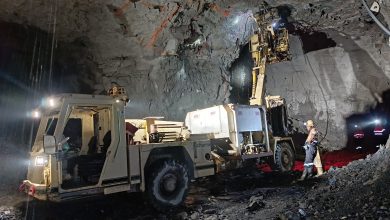
One of the challenges of sustaining operations in deep-level and ultra-deep mining environments is the high cost of providing reliable ventilation. Interestingly, the adoption of Battery Electric Vehicles (BEVs) as an alternative to diesel-powered mobile vehicles has been demonstrated to be effective in reducing requirements for providing ventilation. This indicates that the use of BEVs does not only reduce greenhouse gas emissions to enable compliance with relevant legislation.
In deep level – ultradeep levels – in which hard rock mining is migrating in search of valuable ore, it is becoming increasingly expensive to provide vital services like ventilation. This is prompting mining companies to explore cost-effective, alternative ways – with relative success in some instances.
Study
Findings of a 2019 study conducted at a gold mine in South America suggest that there could be untapped opportunities in replacing diesel-powered vehicles with battery electric vehicles (BEV) in underground mines. According to ventilation specialists (in ventilation engineering, mine ventilation and emission analysis) from SRK Consulting USA, a mine could cut ventilation requirements (costs), above and beyond reducing greenhouse gas emissions from diesel emissions. Considering the current challenges in the mining environment, these two have far greater significance.
Perhaps the impact of BEVs on ventilation requirements is more comprehensible when emissions from vehicles are considered.
Emissions from diesel-powered trucks
Typically, diesel-powered large mine-hauling trucks are the main source of emissions on mine sites. The Mckinsey report (Decarbonisation– What every CEO should know) estimates that mining vehicles account for 30% to 50% of total direct greenhouse emissions at a mine site. Besides, it observes that, in some regions, it is not uncommon for a figure of up to 80% to be recorded.
Hence, the team from SRK Consulting sought to establish the impact on ventilation of using BEVs as an alternative to the equivalent ‘traditional“ diesel-powered haul trucks (Primary haulage) and load haul dump loaders (LHD) (loading).
Typically, to get the correct statistics, the local regulatory agency’s values specified for diesel engines and for pollutants generated from the combustion of the entire mining fleet are applied. The following aspects are considered – total minimum mine airflows and localised, zone-specific, airflows are generally straightforward using this method. And the South America BEV impact project was no exception.
The results
Results indicated that the adoption of BEV for primary haulage and loading equipment could result in a potential reduction of the ventilation system airflow demand by 50% of the original airflow and fan power by 80%. It has to be pointed out that this can be achieved without making any modifications to the original mine infrastructure, besides redistributing the required airflow in the mine to meet various mining demands.
Ultimately, less airflow demand as a result of BEVs would result in a reduction in the size and number of raises (development savings). And so, there would be significant reductions in ventilation system infrastructure requirements.
Not only would the use of BEVs save high costs on ventilation and cooling but also improve worker health. Besides, BEVs produce a fraction of noise as diesel-powered engines.
More cases to be documented
Doubtless, there are potential opportunities for using BEVs as an alternative to diesel in hard rock underground mines. Certainly, with the uptake of BEV set to increase, more cases of reduction of ventilation costs will be documented.
However, at this juncture, it is rational to avoid overstating the potential of BEVs in underground mining environments. The SRK report acknowledges that there are challenges yet to be addressed relating to the reliability of batteries. These are namely, battery degradation, potential production losses due to charging and/or battery swap outs, and power grid requirements for charging of batteries. SRK report fittingly concludes: “Despite these potential issues, a more significant use of BEVs provides a promising alternative.”






